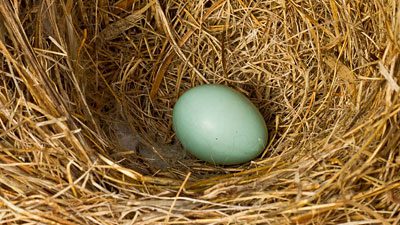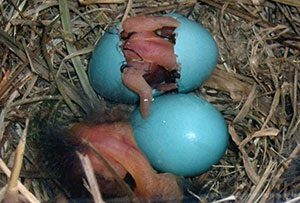Join NestWatch and See Life as It Hatches
March 17, 2011
Whether in a shrub, a tree, or a nest box, bird nests are all around us. Each spring and summer, volunteers across the country visit nests and report their findings to the Cornell Lab of Ornithology’s NestWatch project at www.nestwatch.org. NestWatchers keep track of how many eggs are laid and how many hatch. As the young birds grow, participants collect valuable data on the nesting success and survival of birds.
“NestWatch helps people of all ages and backgrounds connect with nature,” says project leader Jason Martin. “The information that our dedicated citizen scientists collect allows us to assess the impact of threats to birds, including environmental change and habitat destruction, and to better understand complex nesting behaviors.”
For example, NestWatch data show that the nesting behaviors of Eastern Bluebirds vary geographically. Because high air temperature increases the likelihood that eggs will not hatch, bluebirds in southern locales compensate by beginning incubation before all eggs in a clutch are laid, unlike bluebirds in the north. This tactic allows the birds to have more control over egg temperature, increasing the likelihood their eggs will hatch.

“I consider NestWatch a huge electronic treasure chest,” says Pauline Tom, a NestWatch participant and president of the Texas Bluebird Society. “My efforts now go far beyond my backyard because as a citizen-science participant, I’m a member of the world’s largest research team.”
All materials and instructions on how to participate are available on the NestWatch website, including directions on how to find and monitor nests without disturbing the birds. It’s fun, easy, free—and it ultimately helps the birds.
“Armed with the knowledge we get from NestWatch data, we can take the necessary steps to help birds survive in this changing world,” said Martin.
Our immensely popular NestCams are also back online, using live video from the nests of Barn Owls, bluebirds, wrens, Wood Ducks, and many other species to offer a peek into the hidden lives of nesting birds.

All About Birds
is a free resource
Available for everyone,
funded by donors like you
American Kestrel by Blair Dudeck / Macaulay Library
